Written by Tayshaun Burrows, BAMSI student
My name is Tayshaun Burrows, I am a student at the Bahamas Agricultural and Marine Science Institute (BAMSI), working on my associate degree in marine science. Part of the requirements for this are to spend four weeks during the summer as an intern with an organization in my degree field.
The organization that I chose was Saving the Blue, as I had previous experience with them. Last year, Saving the Blue was offering sponsorships to BAMSI students in the Marine Science Program an opportunity to spend a week with them while they conducted field work on their various shark and ray research projects. I gained a lot of knowledge and firsthand experience from this trip, and greatly enjoyed it, so when the time came to complete my internship, I was excited to choose Saving the Blue to continue my development researching sharks.
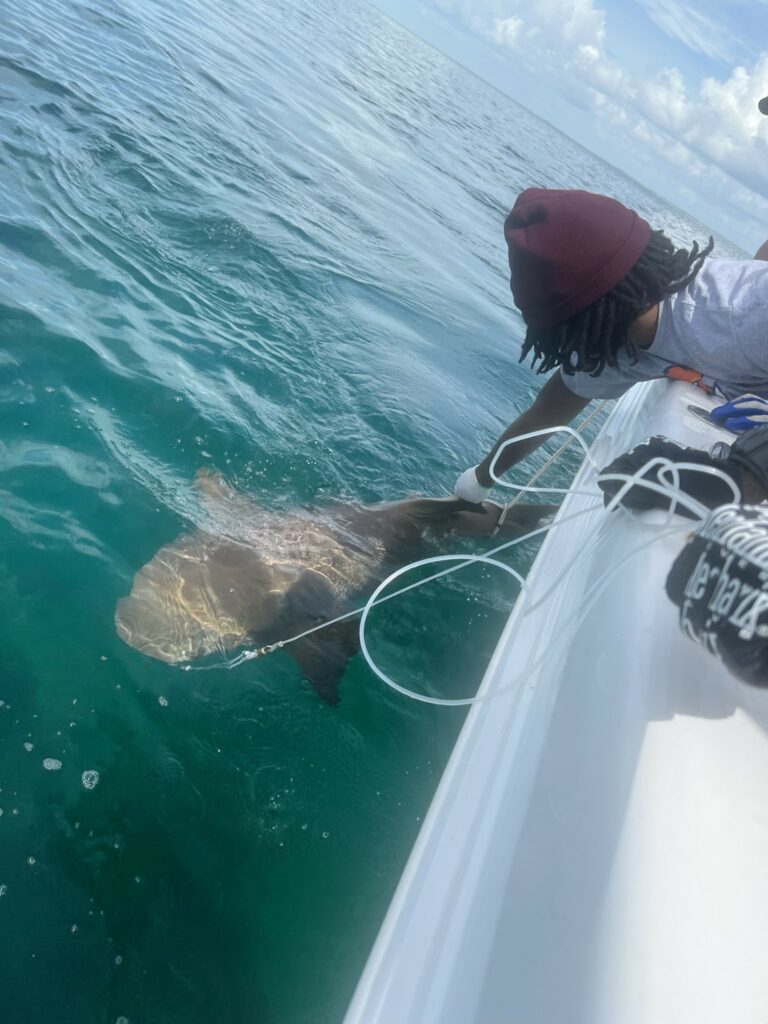
For two weeks of the internship, I was based in Cargill Creek, Central Andros where I assisted Saving the Blue with various research projects to help understand more about the distribution and abundance of sharks and rays around the island. We used single hook block rigs to catch and tag sharks as well as deployed baited remote underwater video stations (BRUVS) to record which species were using different habitats. Through this experience, I encountered seven different species of sharks in the wild and learned how to tell them apart, using their coloration, fin and body shapes or features. For example, a blacknose shark has a small black smudge on its nose and nurse sharks have barbels that they use to search the sea floor for food.
I also gained knowledge and experience on how to set up and deploy the equipment, including learning how to tie knots and setup fishing rigs. However, my main responsibility was to ensure the BRUVS were deployed and retrieved correctly. This included confirming batteries were charged, checking the camera lens was clean, ensuring the cameras were recording (correct format and resolution) before being deployed, weighing the bait used, and finally downloading the footage for backup and later review.
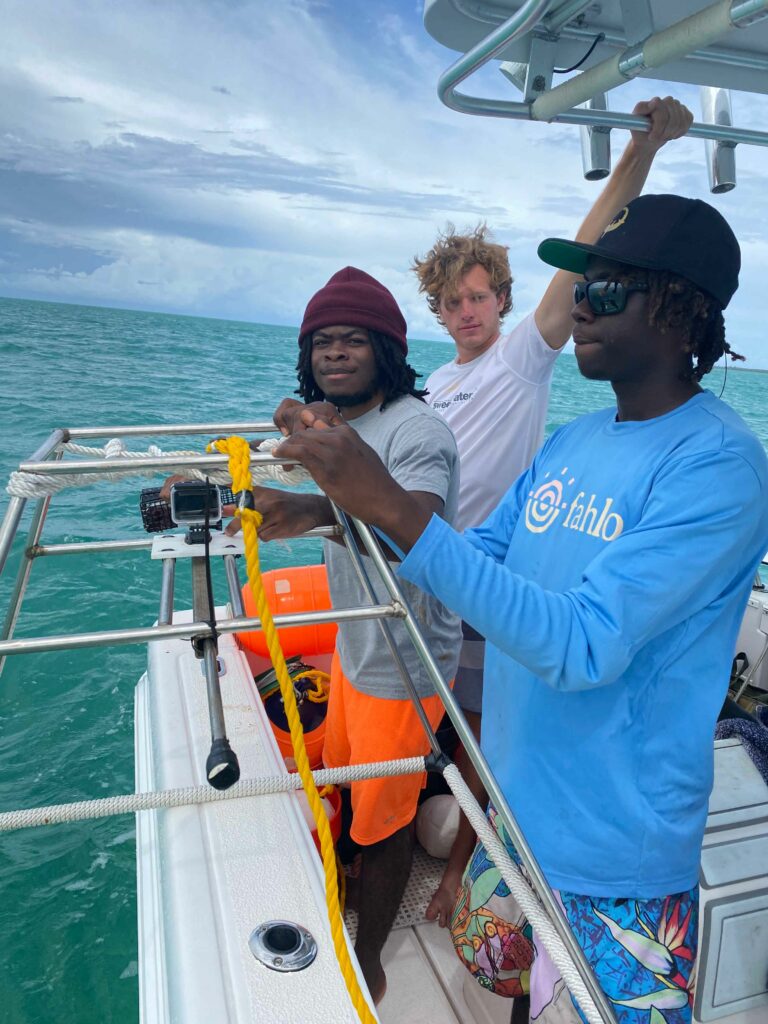
For the two weeks that I was stationed home, I was tasked by my internship supervisor to review all the videos that were collected by the BRUVS. I watched almost 50 hours of footage from cameras deployed in habitats, such as the flats and back reef. I recorded the number and species of sharks or rays that appeared in the footage, as well as any distinctive features that an individual animal might have. One memorable video had three nurse sharks, two blacknose and a reef shark all in one frame!
This experience has truly changed my whole prospective on what it means to be a marine biologist and has given me a tremendous appreciation for marine creatures, especially sharks. The insight and firsthand experience that I received from this internship has helped me gain a sense of what to expect from this career. The team that I was able to work with was extremely knowledgeable, helpful, and cared greatly for the environment, especially the marine environment. They are extremely passionate about their work, and I was able to learn a lot about sharks and the marine ecosystems that they live in. I am motivated to continue working with Saving the Blue and hope to deploy further BRUVS in various habitats in Andros to learn more about the sharks and rays that use its waters.
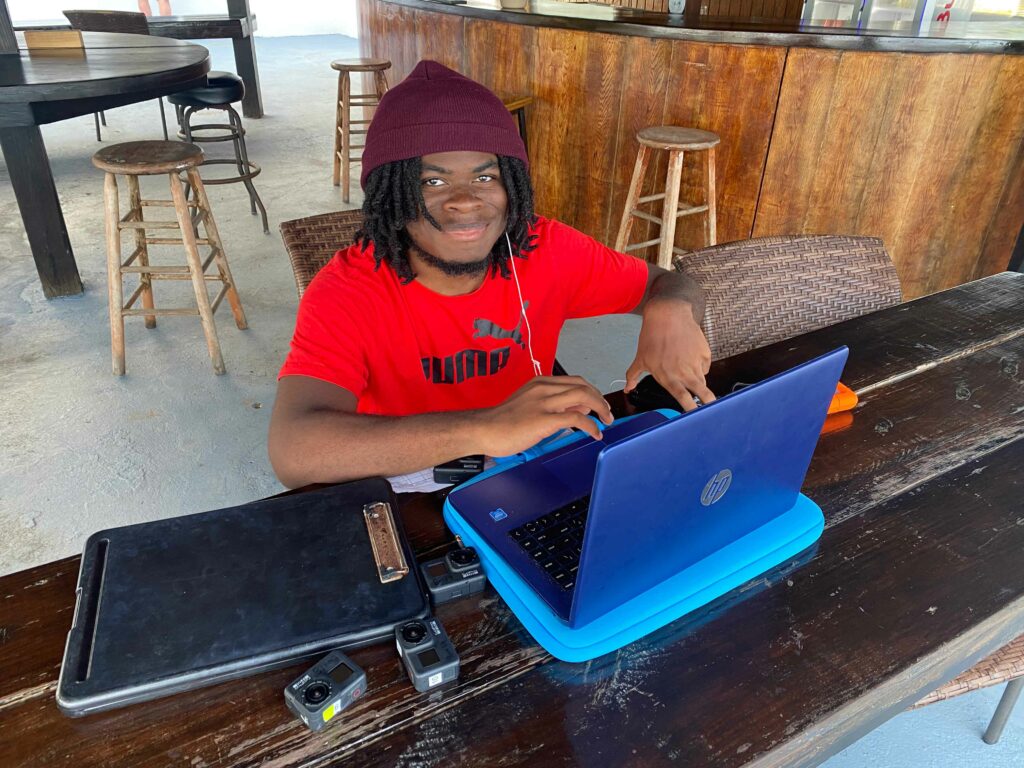
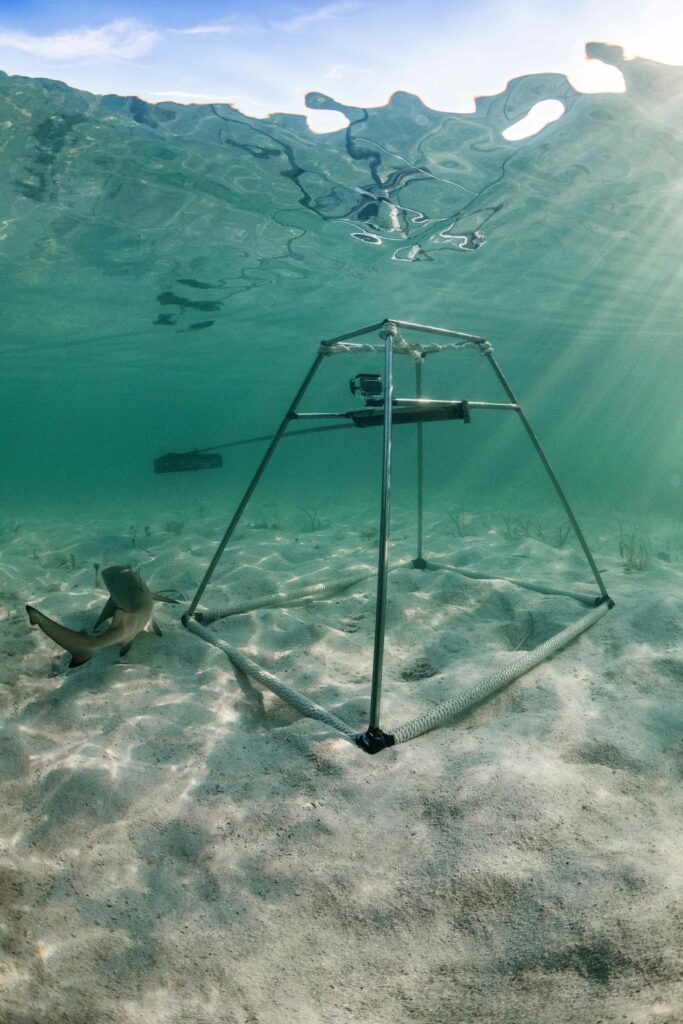
If you’re a Bahamian student interested in learning more about sharks and rays and joining the Saving the Blue team visit their website or follow @SavingTheBlue on Twitter, Facebook or Instagram for more information.
This is a project of the Atlantis Blue Project Foundation.
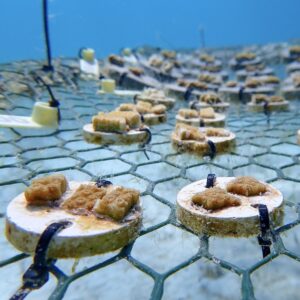
What If Saving an Entire Reef Started With a Single Coral Fragment?
Through the Reef Rescue Network (RRN) in partnership with Atlantis–Paradise Island and the Atlantis Blue Project Foundation, that’s exactly what’s happening—every day, in The Bahamas.
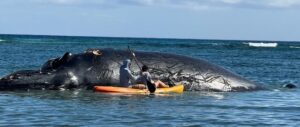
Rescue, Research, and Recovery: Humpback Whale Stranding in The Bahamas
When Tragedy Sparks Action: A Humpback Whale Stranding in Eleuthera In February 2025, our commitment to marine mammal conservation in The Bahamas was put to

The Lifeline of Coral Reefs: How Gene Banks Help Save Endangered Corals
In the clear, warm waters of The Bahamas, corals form vibrant underwater ecosystems essential to marine life, local economies, and coastal resilience. However, coral reefs
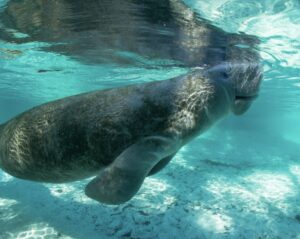
Rare Manatee Sighting in Nassau Highlights Urgent Need for Conservation Awareness
On September 25, 2024, a rare and captivating sighting occurred at Bay Shore Marina in Nassau—a manatee was spotted casually drinking fresh water from a
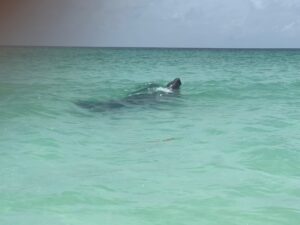
Community Efforts Drive Marine Mammal Conservation in The Bahamas
In late July 2024, The Bahamas Marine Mammal Research Organisation (BMMRO) was alerted to a tragic discovery in the waters north of Bahama Palm Shores,
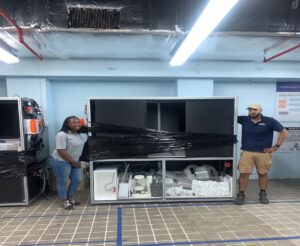
Bahamas Coral Gene Bank Equipment Arrives at Atlantis Resort
We are thrilled to announce that The Bahamas Coral Gene Bank at Atlantis, Paradise Island has received two 40-foot containers packed with essential lab equipment

